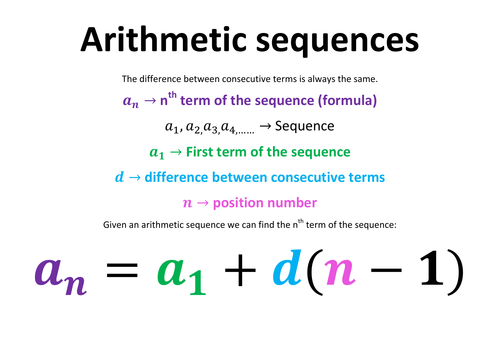
Master arithmetic sequences with our easy-to-use online calculator! Whether you’re a student, teacher, or math enthusiast, this tool helps you quickly find terms, common differences, and sequence sums. Along with accurate calculations, you’ll learn formulas, step-by-step methods, and real-world examples to understand how arithmetic progressions work. Designed for simplicity and clarity, our calculator gives instant results to save your time and boost confidence in solving sequence problems. Explore, practice, and perfect your math skills — all in one convenient place.
This arithmetic sequence calculator, also known as an arithmetic series calculator, is a simple tool for exploring sequences of numbers formed by repeatedly adding a fixed value. You can use it to determine any aspect of a sequence – whether it’s the first term, the common difference, the nᵗʰ term, or the sum of the first n terms. Jump right in to use it or keep reading to understand how it works.
In this guide, we define what an arithmetic sequence is, explain the sequence formula that powers the calculator, and provide the equation for calculating an arithmetic series (the sum of an arithmetic progression). We also highlight the key differences between arithmetic and geometric sequences and provide a clear, simple example that shows how to apply this tool effectively.
What is an Arithmetic Sequence?
To understand an arithmetic sequence, you first need to know what a sequence is. In mathematics, a sequence is an ordered collection of objects, such as numbers or letters. Each object in a sequence is called a term or element. Often, the same object can appear multiple times in a sequence.
An arithmetic sequence is a specific type of sequence made up of numbers. Each number after the first is formed by adding a fixed value, called the common difference, to the previous number. It can be either a simple number if it has a finite number of terms (for example, 20 terms), or it can be completely arbitrary if the number of terms is not finite.
Every arithmetic sequence is completely determined by two values: the first term and the common difference. Knowing this allows you to write the entire sequence.
How to Use Arithmetic Sequence Calculator?
Follow the simple steps given below to calculate the terms in an arithmetic progression using the Arithmetic Sequence Calculator:
Step 1: Open QMath’s online Arithmetic Sequence Calculator.
Step 2: Enter the first term (a) and the common difference (d) in the designated fields of the Arithmetic Sequence Calculator.
Step 3: Press the “Find” button to generate the terms of the arithmetic sequence.
Step 4: Press the “Reset” button to clear the inputs and provide new values.
Can you identify the common difference in each sequence? Hint: Subtract any term from the term that follows it.
From these examples, you can see that the common difference does not have to be a whole number – it can be a fraction or even a negative number.






